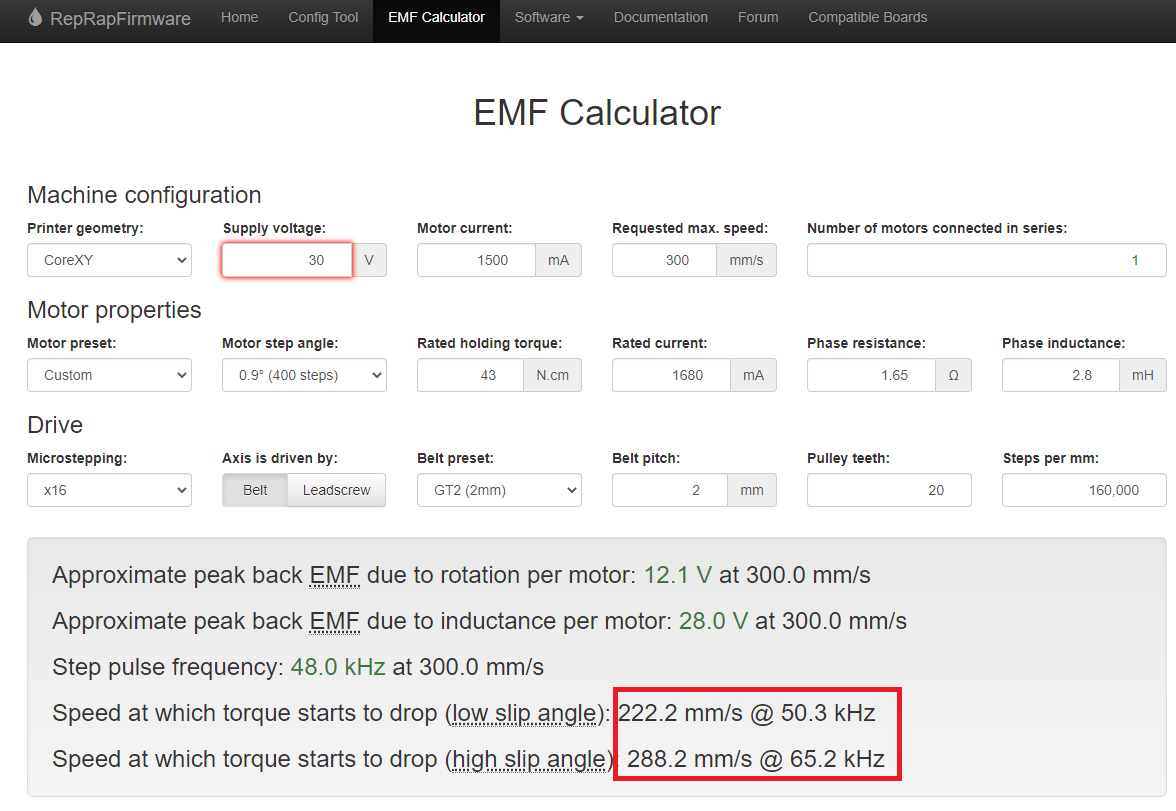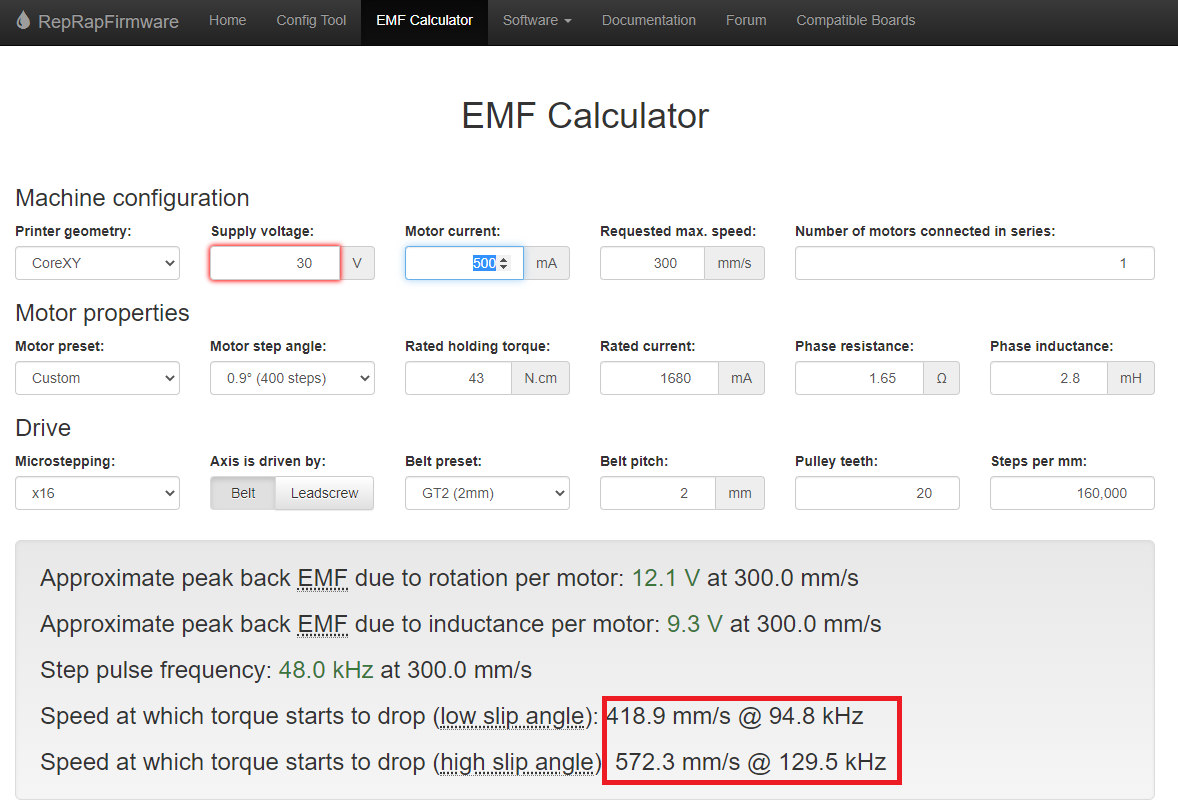Bug in EMF calculator?
-
Hi!
I am using the EMF Calculator at https://www.reprapfirmware.org/
When lowering the Motor current on the Machine configuration, the Speed at which torque starts to drop increases.
Shouldn't it by contrast, decrease when using the same motor properties? -
No there is no bug.
You are able to reach higher speed by lowering the motor current.I few month ago i had some issue with skipping steps with my extruder stepper. After lowering the motor current, i was able to reach higher speed without any issues.
-
Take a look at "Approximate peak back EMF due to inductance per motor"
-
It's not a bug, but you can't actually increase the achievable speed by lowering the current. The calculator is stating the speed at which torque starts to drop off. When you specify lower current, you are therefore achieving lower torque, and therefore the point that the torque starts to fall is at a higher speed than it was when the torque was higher.
Essentially, picture the graph of the torque curve of the motor, given full peak motor current. Now picture a line drawn at a lower point than peak torque. This represents the new, limited torque peak due to reduced motor current. This line intersects the graph, as the torque starts to drop off, at a higher speed than when the peak torque itself starts to drop off.
-
@bot
Thank you! That was a very good explanation.
So when running at 400mm/s, torque would be like supplying 550mA to that stepper if the calculator reads “ Speed at which torque starts to drop (low slip angle): 401.3 mm/s @ 90.8 kHz”.Based on that I think I can basically use very low acc, speed change and speed to test with my hand how much torque that is at 550mA and the probability of slippage at 400mm/s and higher current.
-
Imagine that you drive back and forth between two cities. If the cities are closer you will have higher frequency of round trips.
Same with an inductor, when you alternate between positive and negative currents, the higher currents you want to reach, the more time it will take you.
When you increase the power supply voltage, it's similar to having a more powerful engine. When you decrease the inductance, it's similar to having a lighter car. For a long distance and high turn around frequency you want a powerful engine and a light car.

